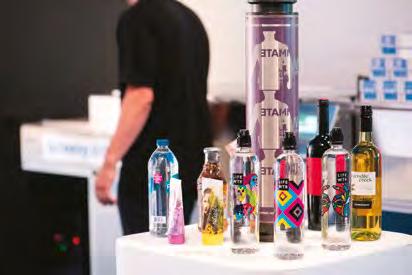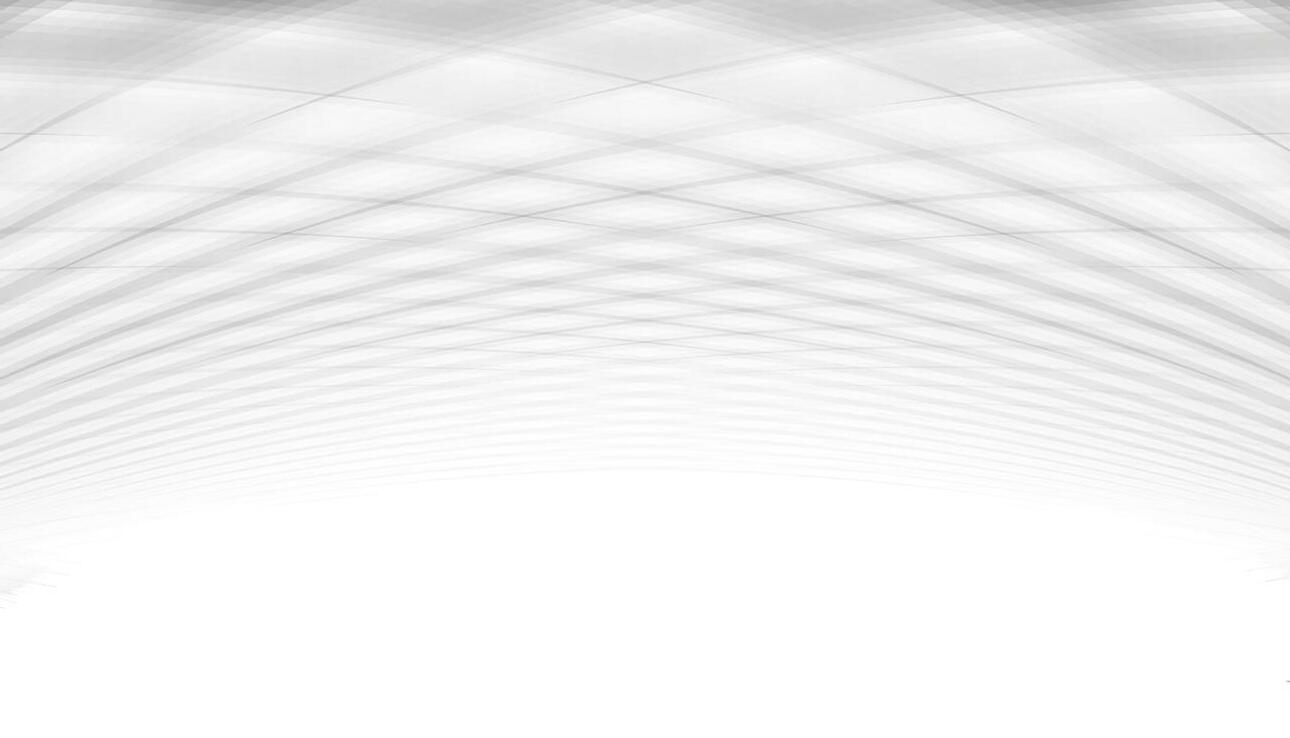
6 minute read
Mega Screen: process-reliable screen printing plate for 660 mm (26”) printing width
FLUSSO D’INCHIOSTRO MIGLIORATO
I retini sono forniti da Gallus già tagliati a misura, con un angolo di 30°. “Ciò migliora il flusso di inchiostro con i retini più spessi, poiché l’inchiostro viene steso lungo la diagonale delle aperture del retino. In base all’esperienza fino a oggi conseguita, consigliamo di regolare la viscosità dell’inchiostro, che dovrebbe essere leggermente più liquido per risultati di stampa ottimali”, spiega Roland Greutmann
Advertisement
AFFIDABILITÀ DEL PROCESSO
Ciò che rende la lavorazione di Screeny così sicura è il processo di produzione del materiale utilizzato per il retino. Garantisce un rivestimento molto uniforme durante la produzione, che si distingue dalla qualità dei retini rivestiti manualmente. Il taglio a formato del materiale è altrettanto preciso. I fogli grezzi vengono tagliati con tolleranze minime su una moderna macchina per taglio laser. Maggiore è la lunghezza di ripetizione dei retini, tanto più importante è che questa fase di produzione venga eseguita con precisione, per garantire l’accuratezza degli effetti serigrafici nella stampa finale. Un altro vantaggio del processo Mega Screen è il
Mega Screen è saldato con una forma rotonda e poi attaccato agli anelli della matrice / Welded to a round shape the Mega Screen is than attached into the stencil ring. (Source: Gallus Ferd. Rüesch AG)
ENGLISH Version Mega Screen: process-reliable screen printing plate for 660 mm (26”) printing width
MEGA SCREEN NOW MAKES IT POSSIBLE TO RELIABLY ACHIEVE EXCEPTIONAL DESIGN EFFECTS IN ROTARY SCREEN PRINTING, IN UP-TO-MEDIUM PRINTING WIDTHS. THE SCREEN MATERIAL DEVELOPED BY GALLUS SCREEN PRINTING FEATURES A SIMPLE PROCESSING PROCEDURE AND A STABLE SCREEN STRUCTURE. THE COMPANY IS THUS ADDING FORMATS THAT COVER FLEXIBLE PACKAGING AS WELL AS LABELS
What makes screen printing features so attractive is their direct effect on human sensory perception. Textured varnishes, tactile coatings and innovative finishing effects immediately appeal to consumers’ senses.
This explains the general growth of screen printing, which also extends to new applications. “The market is constantly on the lookout for graphic innovations and many of them can be implemented in a particularly impressive way using screen printing”, says Oliver Vetter, Head of Screen Printing Business at Gallus Ferd. Rüesch AG, describing the potential of screen printing. For decades, Gallus Screeny has been helping users all over the world to create unusual design effects using rotary screen printing. This also applies to the
Con la stampa serigrafica rotativa si realizzano idee innovative e design particolari / Innovative ideas and unusual product designs are often implemented using rotary screen printing. (Source: Gallus Ferd. Rüesch AG)




tempo necessario per l’avviamento, davvero molto breve. Eliminando il tempo e l’impegno necessari per preparare l’emulsione e applicarla più volte al cilindro di stampa, si riduce il numero delle fasi di lavorazione, il che riduce molto il tempo necessario per produrre il cilindro Mega Screen, rispetto alle lastre rivestite a mano. Per produrre il cilindro di stampa, il cliente deve solo esporre la lastra di stampa, lavarla con acqua e saldarla in una forma rotonda, che viene poi fissata agli anelli della matrice.
CHI PUÒ ESSERE INTERESSATO A QUESTO NUOVO SVILUPPO?
Mega Screen è interessante per gli utilizzatori che negli ultimi anni hanno investito in macchine da stampa a banda media. Ora possono anche utilizzare il consolidato processo di produzione dei retini anche per quelli più grandi e trarre dei vantaggi dai tempi di produzione significativamente più brevi garantiti dai cilindri Mega Screen in condizioni costanti e stabili. I principali potenziali utilizzatori sono aziende multinazionali nel settore delle etichette e degli imballaggi che guidano il settore con concetti innovativi. Usano retini più grandi per ottenere effetti speciali nella stampa degli imballaggi flessibili.
Le pellicole trasparenti richiedono un’elevata opacità per mettere in evidenza il design Transparent films require a high opacity of white to show off the design. (Source: Gallus Ferd. Rüesch AG)

requirement for wider screens for presses in the mid-web sector. Whereas screens were previously designed for presses up to 560 mm (22’’) wide, mid-web presses require working widths of 660 mm (26’’). Due to their width, they place higher demands on the mechanical stability of the screens. The demand for such screens led Gallus Screen Printing to develop a new screen material with the product name Mega Screen. “For printing widths of up to 660 mm, Mega Screen brings the necessary stability and process reliability to screen printing” says Oliver Vetter, by way of introduction of the new product.
SCREEN MATERIAL WITH CONTROLLED NICKEL BUILD-UP The production of the more stable screen material is achieved by a change in the manufacturing method, which Roland Greutmann, Head of Customer Services Screen Printing Business explains: “With Mega Screen, the coating of the steel mesh is done in a controlled galvanic process in which nickel is applied to the steel screen. When nickel is applied, it is crucial that the nickel is deposited in the depth of the screen and not in the width, which would clog the holes of the screen fabric. With the new manufacturing process, the thickness of the screen mesh is specifically reinforced, while the screen holes remain unaffected”.
IMPROVED INK FLOW The screens are supplied by Gallus already cut to size, with the screen openings at a 30° angle. “This improves the ink flow with the thicker screens, as the ink is doctored across the diagonal of the screen openings”, Roland Greutmann explains the angled arrangement, adding: “Based on experience to date, we recommend adjusting the viscosity of the ink, which should be set slightly thinner for optimum print results”. PROCESS RELIABILITY What makes the processing of Screeny so safe is the manufacturing process of the screen material. It ensures a very even coating during production, which stands out from the quality of manually coated screens. The cutting to format of the material is just as precise. The raw sheets are cut to tight tolerances on a modern laser cutting machine. The greater the repeat length of the screens, the more important it is that this production step is carried out precisely, to ensure the accuracy of the screen printing effects in the final print. Another advantage of the Mega Screen process is the short make-ready time required. By eliminating the time and effort required to prepare the emulsion and apply it to the printing cylinder several times, the number of work steps is reduced, which shortens the time required to produce the Mega Screen cylinder several times over, compared to hand-coated plates. To produce the printing cylinder, the customer only has to expose the printing plate, wash it with water and weld it into a round shape, which is then attached into the stencil rings.
FOR WHOM IS THE NEW DEVELOPMENT OF INTEREST? Mega Screen is of interest to users who have invested in mid-web presses in recent years. They can now also use the familiar screen production process for wide screens and benefit from the significantly shorter production times of Mega Screen cylinders under constant, stable conditions. Major potential users include multinational companies in the label and packaging sector that lead the industry with innovative concepts. They use the wider screens for special effects in printing flexible packaging.










